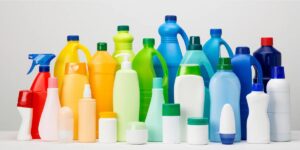3 Hidden Dangers of Colorful Plastic (You Won’t Believe 2!)
Brightly colored plastics might look appealing, but a new study reveals a dark secret. Sunlight breaks down these colorful plastics faster, potentially creating more harmful microplastics. Researchers suggest we may need to choose between vibrant colors and a healthier environment.
CONTENTS: 3 Hidden Dangers of Colorful Plastic

Plastic Color: Environmental Impact
The allure of plastic upon its introduction to mainstream society stemmed partly from its vibrant array of colors and versatility. It wasn’t just a singular material; it could take on numerous forms and hues, influencing everything from toys to music. Even today, its appeal often hinges on its vividness, exemplified by products like the Rabbit R1, which sported an intensely bright orange that proved challenging for reviewers to accurately capture on camera.
However, a recent study published in the academic journal Environmental Pollution suggests that perhaps the emphasis on plastic’s colorful nature has reached excessive levels. Titled “Influence of colourants on environmental degradation of plastic litter,” the research, conducted by teams from the University of Leicester and University of Cape Town, focuses on bottle tops crafted from polypropylene, a ubiquitous plastic type pioneered by the Phillips Petroleum Company in the 1950s.
Sunlight Hurts Colored Plastic
-3 Hidden Dangers of Colorful Plastic
In their study, the researchers exposed six different colored plastic bottle caps—red, green, blue, white, black, and silver—to sunlight on a rooftop in Leicester for a duration of three years. They observed that the more colorful variants experienced significant degradation due to sun exposure, while the uncolored ones remained relatively unchanged. Additionally, the researchers examined aged plastics collected from South African beaches, dating back as far as 45 years. Here, they found that darker plastics exhibited better durability over time compared to their brighter counterparts.
Colorants Hurt Plastic
The abstract of the research suggests that carbon and titanium dioxide colorants serve as protective agents for the HDPE polymer against photolytic degradation. On the other hand, pigments like anthraquinone, phthalocyanine, and diketopyrrolopyrrole were found to facilitate UV-induced degradation of the polymer, resulting in the production of brittle plastics and promoting the formation of microplastics. The findings indicate that pigments lacking strong UV absorption properties are likely to induce similar degradation processes.
Similar Plastic Degradation Found
Dr. Sarah Key, the lead researcher of the project, emphasized the significance of the findings, noting the striking consistency between the results obtained from two vastly different environmental settings. She highlighted that samples exposed to weathering on a Leicester rooftop and those collected from windswept beaches in southern Africa yielded similar outcomes. Dr. Key underscored that even in a relatively cool and cloudy environment over a short period of three years, substantial disparities in the formation of microplastics were observed, highlighting the profound impact of environmental factors on plastic degradation.
Color vs. Microplastics: A Dilemma
The growing concern surrounding microplastics underscores the potential ramifications of the colorants used in plastic manufacturing, possibly necessitating a reevaluation of our reliance on colorful plastics, especially in disposable contexts.
However, this issue is multifaceted due to the significant cultural value attached to color. Entire industries revolve around color, and limiting the use of colorful plastics could pose challenges for marketers, toy manufacturers, food producers, and others reliant on vibrant aesthetics. Imagining a scenario where only white, black, and gray Legos were available for sale illustrates the potential backlash and disruption to established cultural norms and consumer preferences.
Colorful Plastic vs. Health: A Choice
The pervasive presence of microplastics in various unexpected places, including table salt, prehistoric rocks, modern geological formations, clouds, and even in biological systems like the male anatomy, prompts a critical decision. It seems as though we’re faced with a choice: prioritize our affection for colorful plastics or safeguard essential functions like male fertility.
This dilemma underscores the consequences of past decisions that now bind us. However, addressing this issue doesn’t necessarily entail accepting a world devoid of vibrancy and color. It’s a complex challenge that requires balancing environmental concerns with cultural and aesthetic values to forge a sustainable path forward without sacrificing the richness of our visual experiences.
Check out TimesWordle.com for all the latest news
You must be logged in to post a comment.